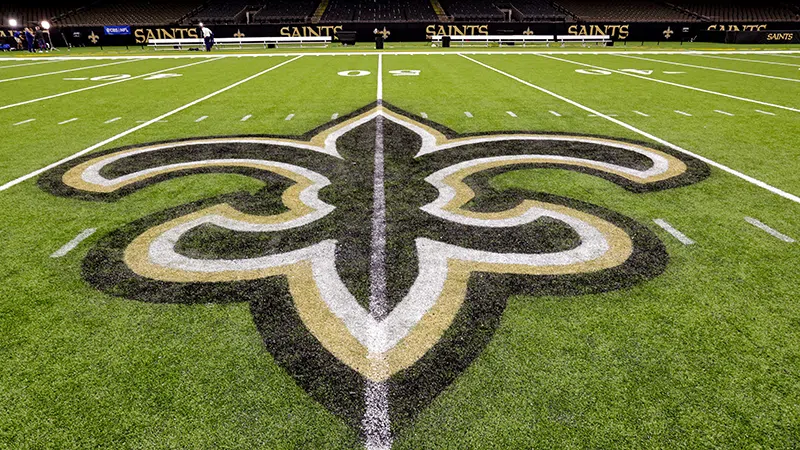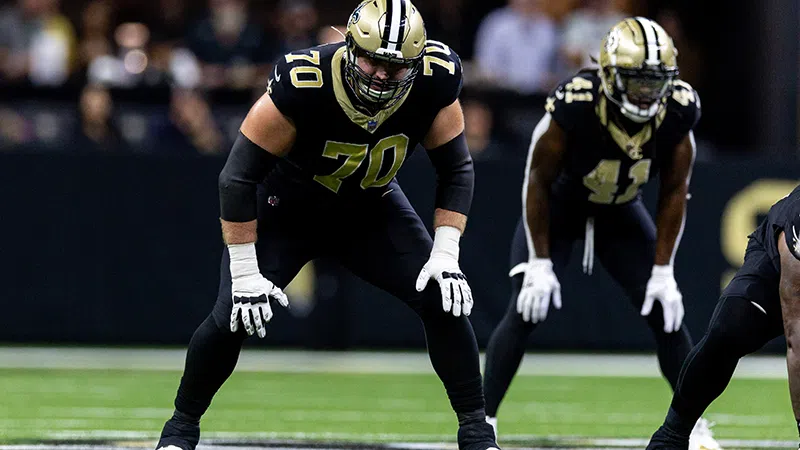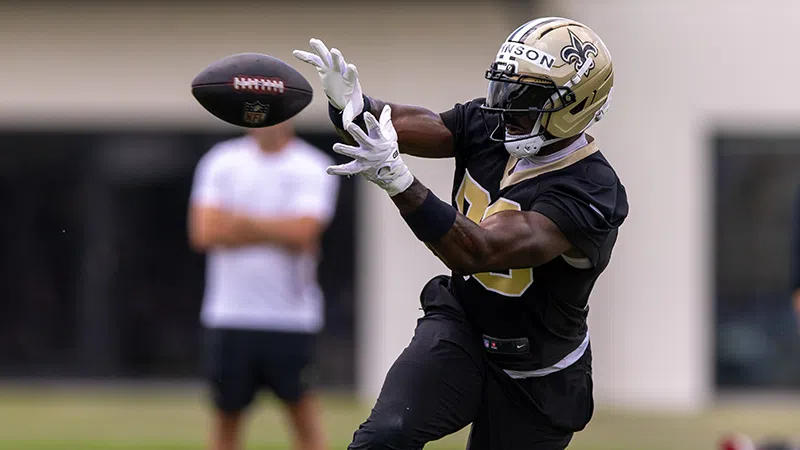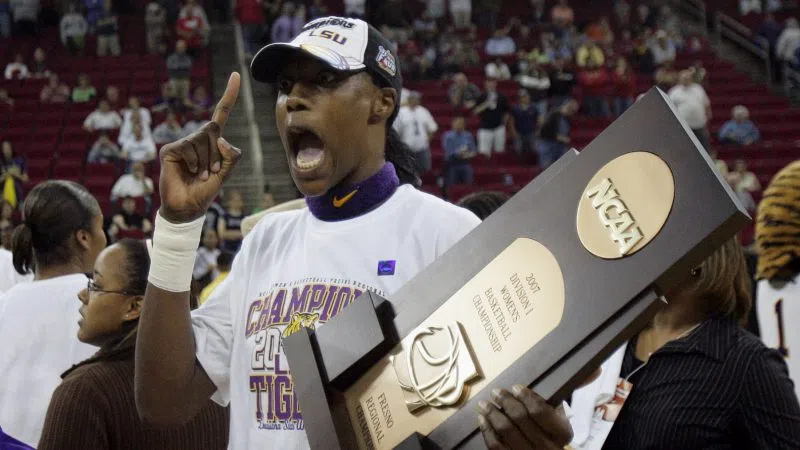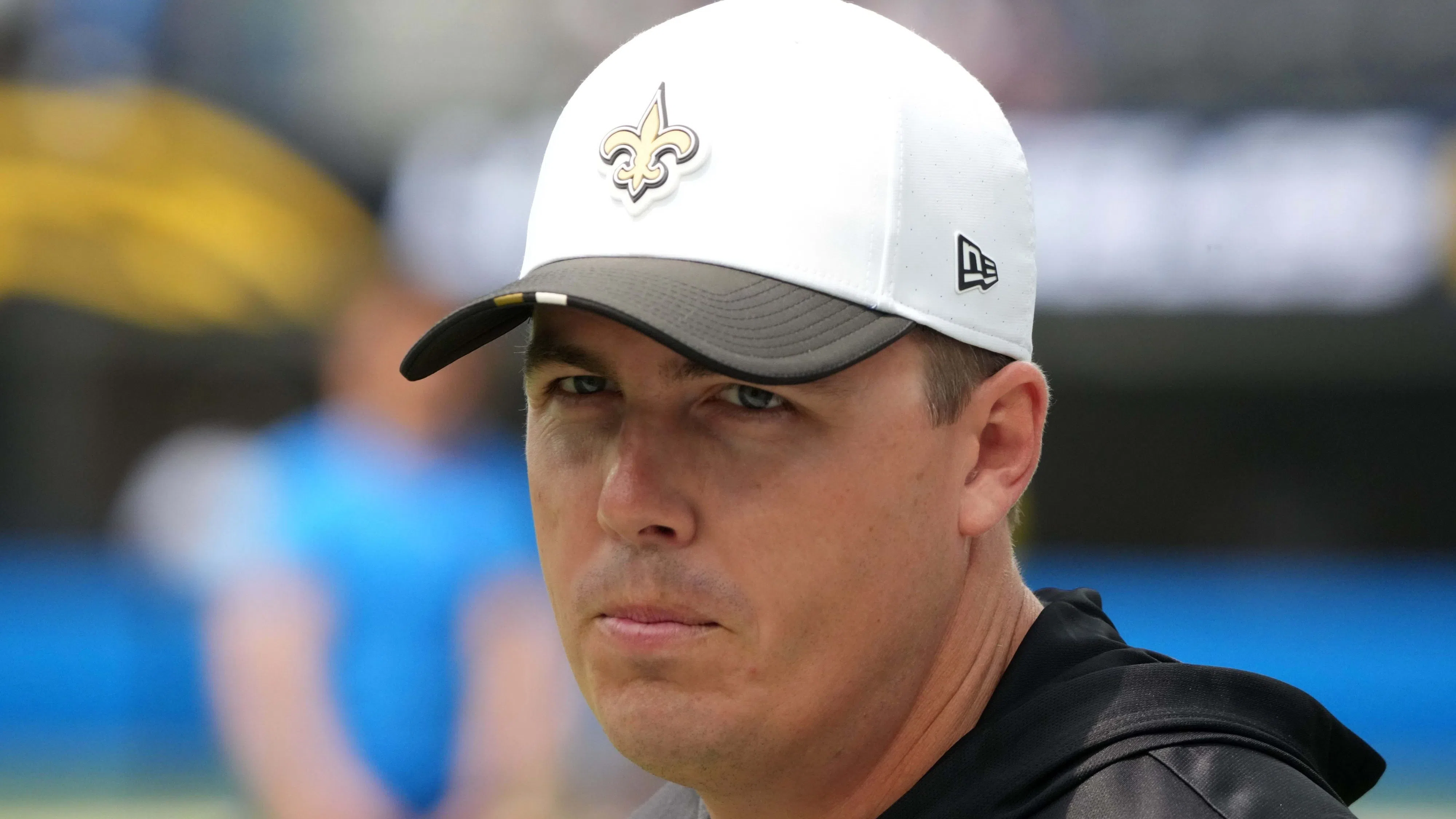
Credit: Kirby Lee-Imagn Images
By Ross Jackson
It didn’t take long for the New Orleans Saints’ offense to look completely different (in a good way) under new head coach Kellen Moore. The Saints were anything but a finished product on the field against the Arizona Cardinals in Week 1. However, they did show some of the new DNA that could take them to new heights after years of treading water.
From personnel usage to tempo and rotation, the Saints looked like an all-new football team last Sunday. If things continue to fall into place over time, the team’s new identity could become a lot of fun to watch.
Personnel Usage
The Saints changed two major things in this area. First, they didn’t rotate their skill position players nearly as often as they used to. Second, the team lived in 11-personnel looks.
We observed the second change was coming back in the preseason, but the consistent usage of offensive talent was hard to pin-point during the exhibition games because teams and lineups were constantly changing during those games. Just looking at the snap counts of the offensive play-makers in particular shows just how much Moore leaned on his top players.
- TE Juwan Johnson – 99% of offensive snaps
- WR Rashid Shaheed – 85% of offensive snaps
- WR Chris Olave – 85% of offensive snaps
- RB Alvin Kamara – 79% of offensive snaps
- WR Brandin Cooks – 76% of offensive snaps
This was the common grouping of players in the Saints’ 11-personnel snaps. Even with Olave in and out after getting banged up a couple of times, he still managed to be on the field for all but 15% of the opportunities.
New Orleans deployed 11-personnel looks on 73.9% of its offensive snaps, No. 5 in the NFL. That’s a far venture from last year when the Saints ranked No. 31 in such snaps at just 33.3%. Last year, the Saints dealt with a lot of injuries at the wide receiver spot. However, even before both Chris Olave and Rashid Shaheed were out for the season, the team only deployed 11-personnel 40.7% of the time (No. 30 in the NFL) over the first eight weeks.
Both of these factors indicate key shifts for New Orleans.
As for rotations, the Saints sent in only five additional skill position players, but there is a sizable drop off between the top five options and the rotational players regarding play percentage.
- TE Jack Stoll – 24% of offensive snaps
- WR Devaughn Vele – 23% of offensive snaps
- RB Kendre Miller – 15% of offensive snaps
- RB Devin Neal – 9% of offensive snaps
- TE Moliki Matavao – 1% of offensive snaps
Tempo
Per Pro Football Focus, the Saints were No. 1 in the league in percentage of tempo snaps. New Orleans used quite a bit of tempo, hurrying to the line as early as the first quarter on drives. While the hurry up nature of the offense did lead to several pre-snap penalties, the growing pains don’t seem to concern the team, who have been preaching tempo all offseason.
The Saints ran up-tempo offense on 22 of the team’s 65 offensive plays, which was good for the NFL lead at 31.9%.
The second place team, the Buffalo Bills, did so at nearly half the rate, 16.7% of snaps (13/78).
New Orleans was aided in this massive number by running a 13-play two-minute drill, though not each play was in a hurry up situation. But even removing all four-minute end-of-game situations, New Orleans used tempo on 27.1% of the remaining 48 plays.
This up-tempo approach wasn’t about necessity for Moore and the Saints, it was about identity.
Rushing Scheme
Finally, the Saints made a big shift away from the outside run game that dominated the percentages last year. Per Next Gen Stats, the Saints ran outside of the tackle on 69.8% of their rushing attempts last year.
In the opening game of the 2025 season, the Saints were a balanced 50/50 when it came to inside or outside the tackles rushes. Moore is known for creating balanced rushing schemes, and that was immediately on display against Arizona.
The zone and man/gap scheme rushing attacks were also balanced. Pro Football Focus charted the team attempting 50% of their 22 rushes with zone blocking and 40.8% behind man blocking schemes. The remaining 9.2% were considered scrambles or other.
In just one game, the Saints have already shown quite a bit of difference in their approach to offense. The new identity hasn’t fully settled in yet, and the team is clearly suffering from growing pains along the way. (Pre-snap penalties being a key identifier of that.) However, New Orleans desperately needed something new and different on offense, and it’s becoming clear they have found it.



